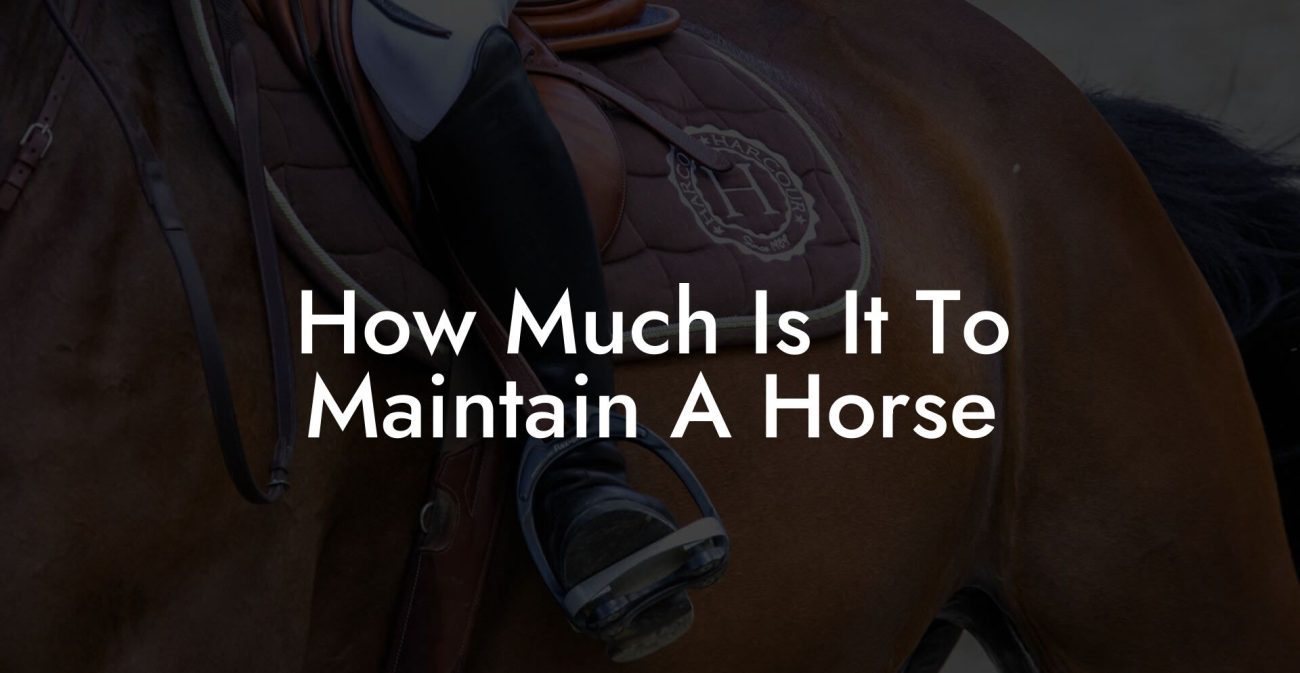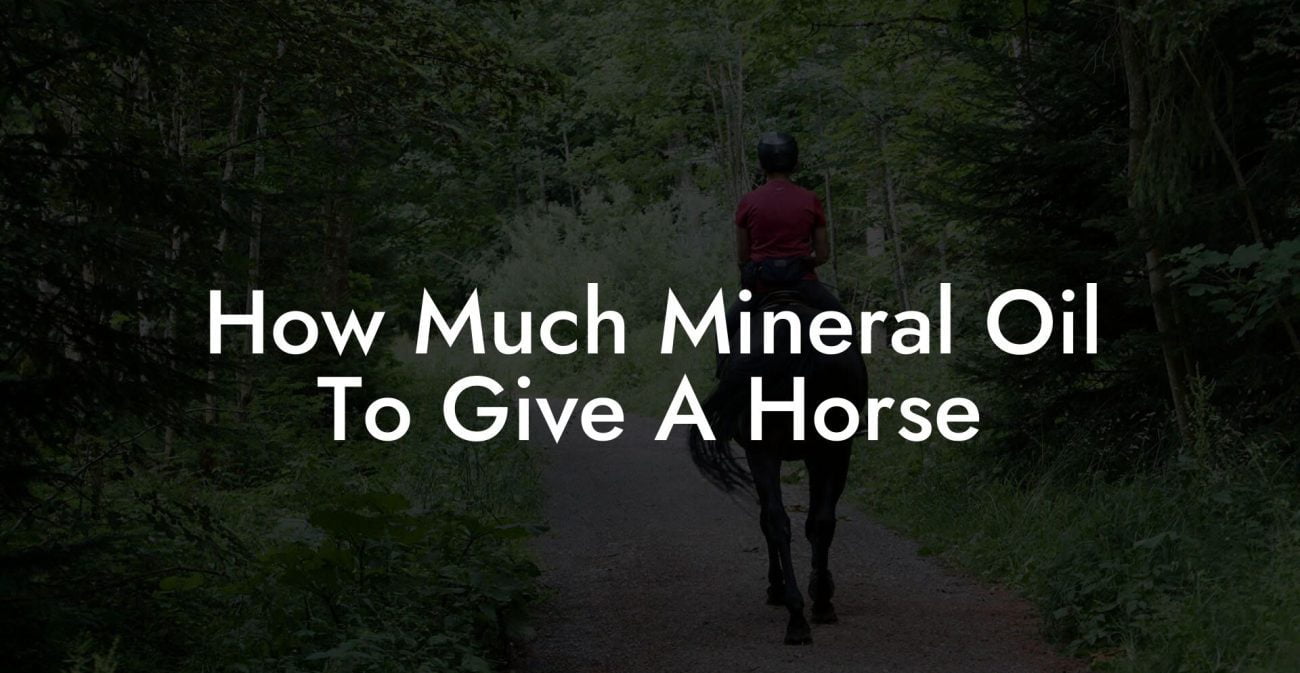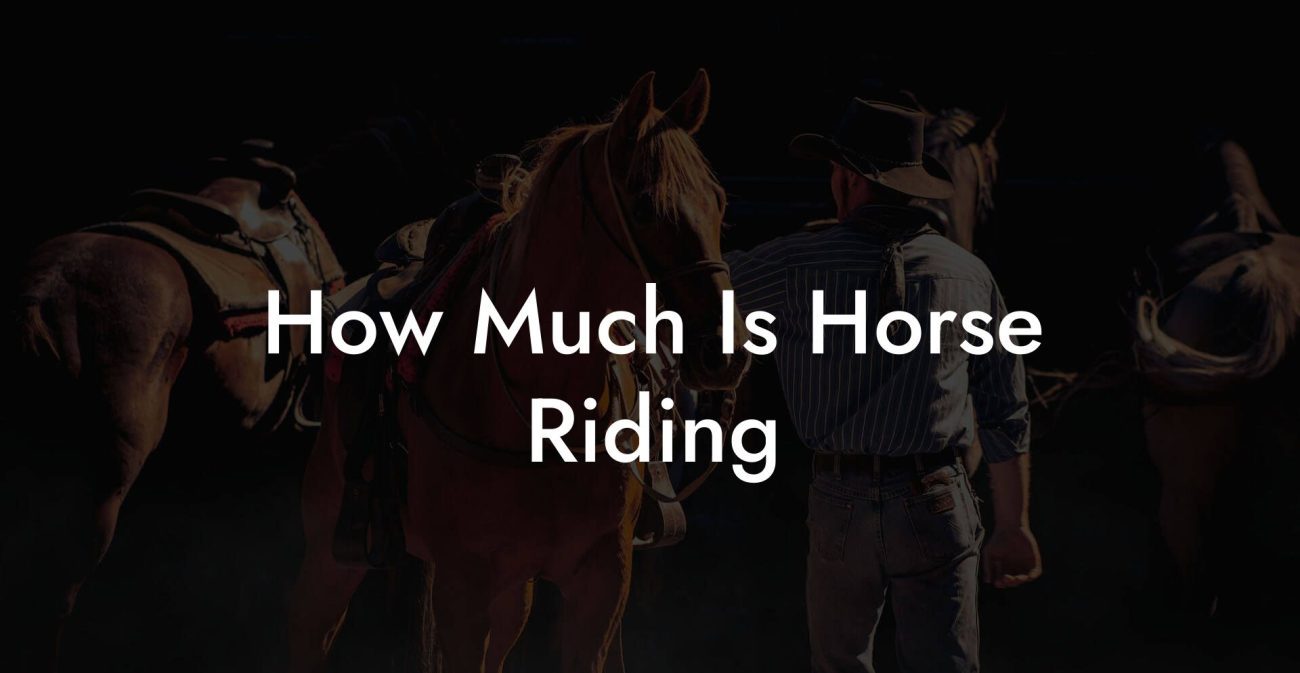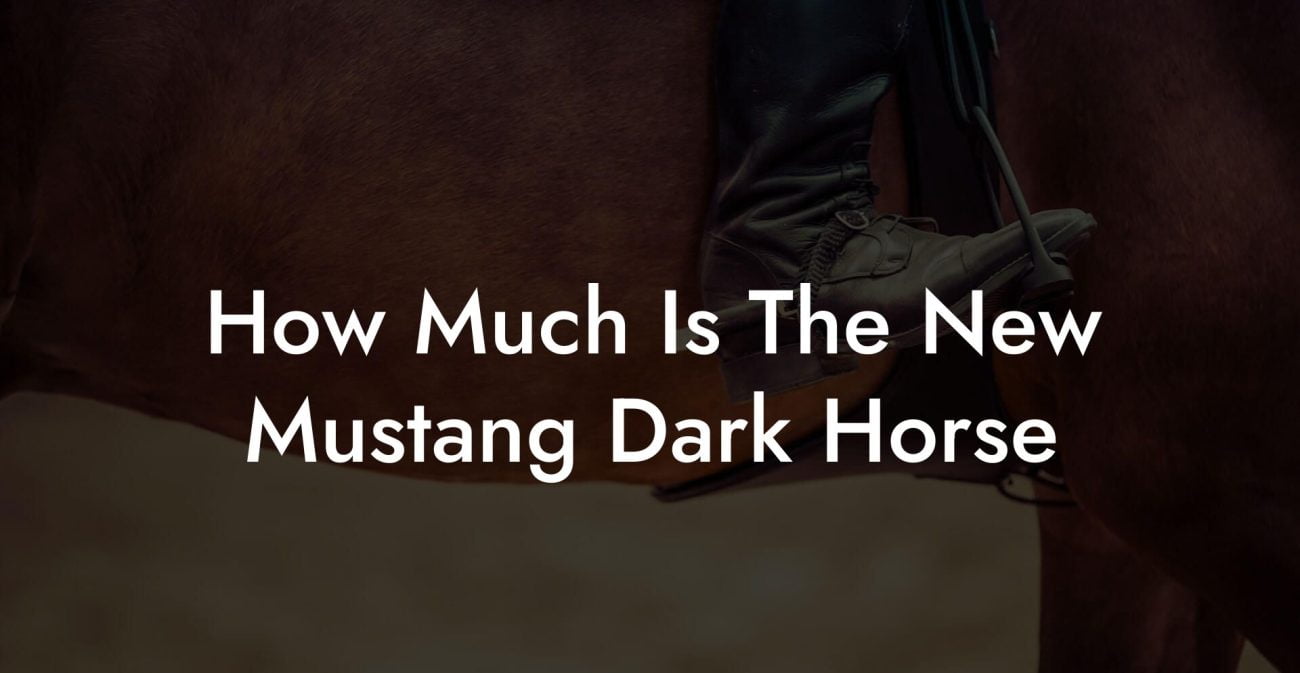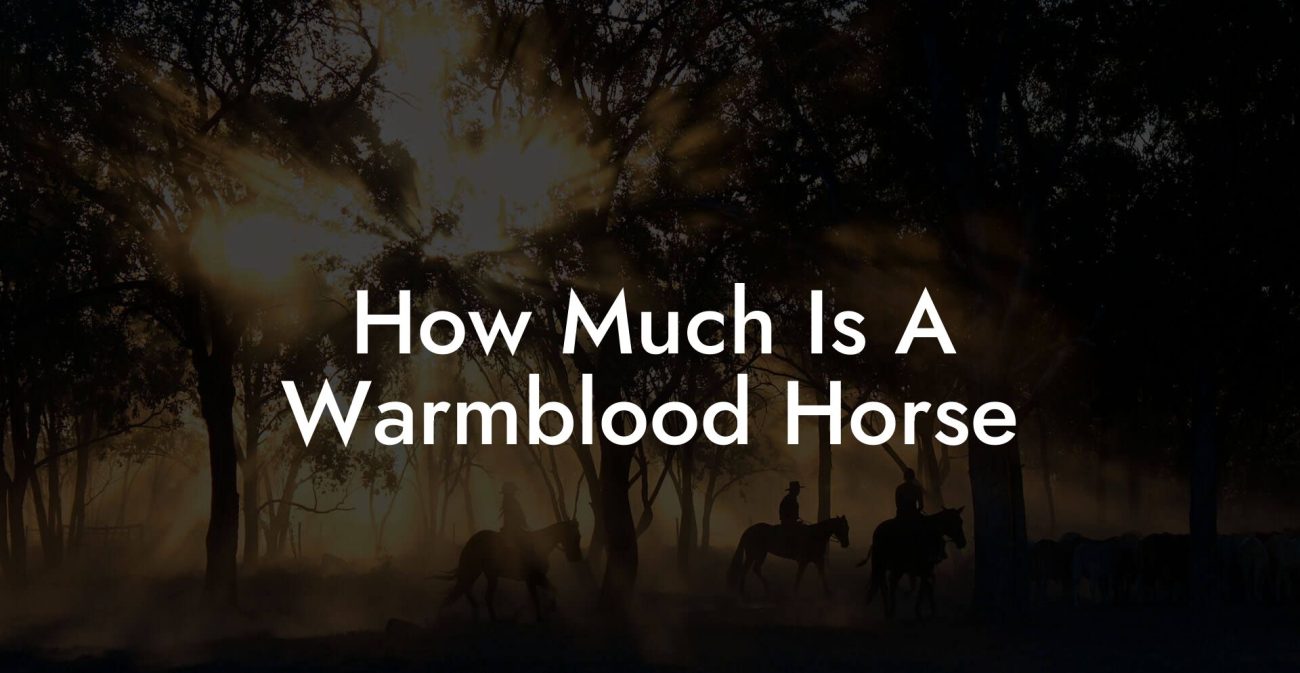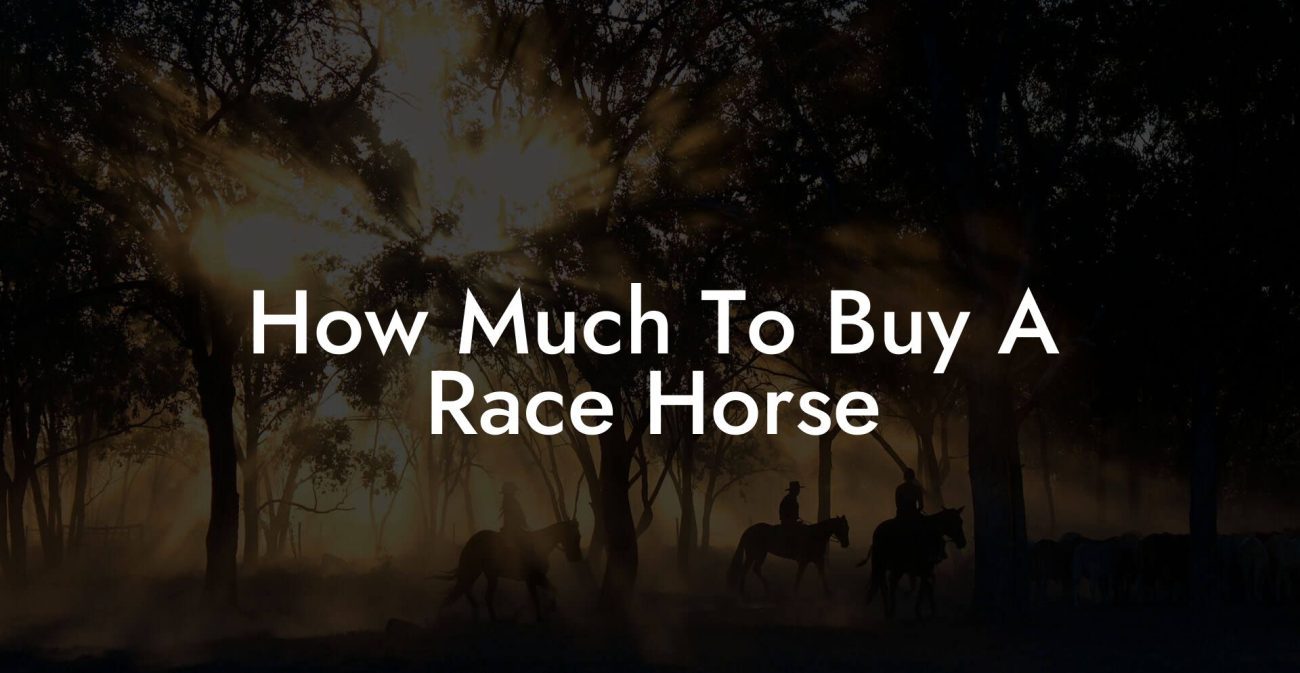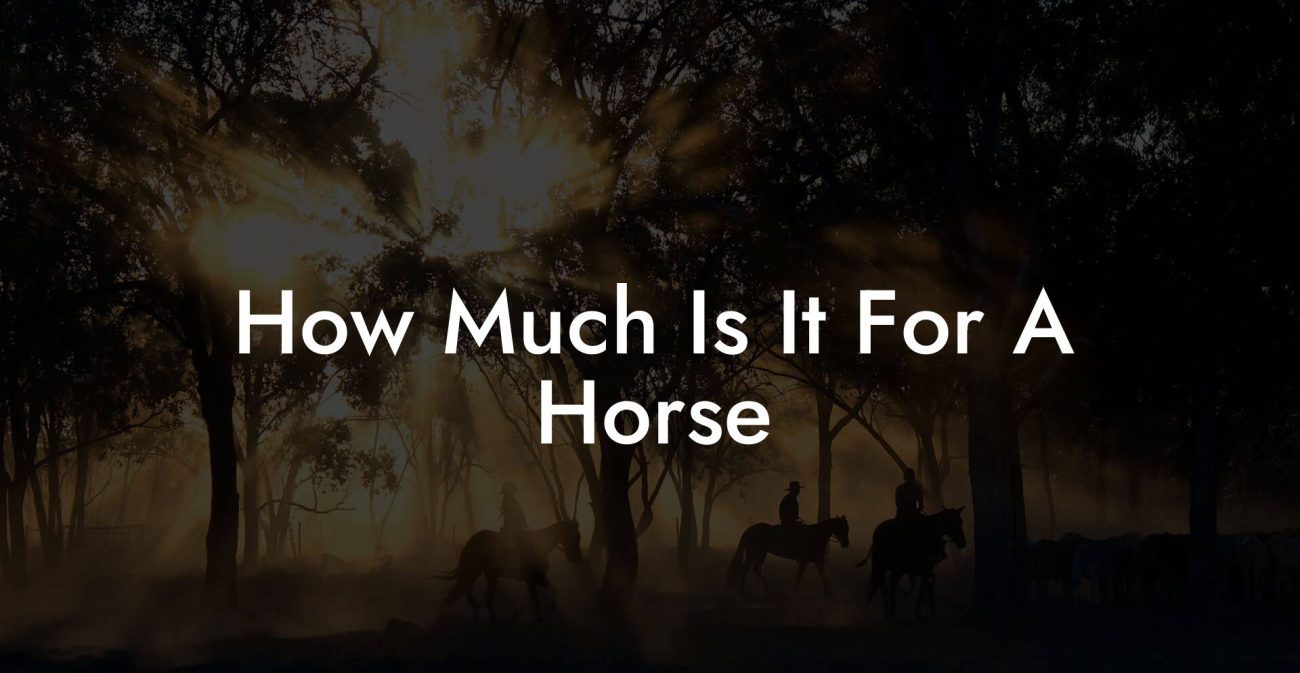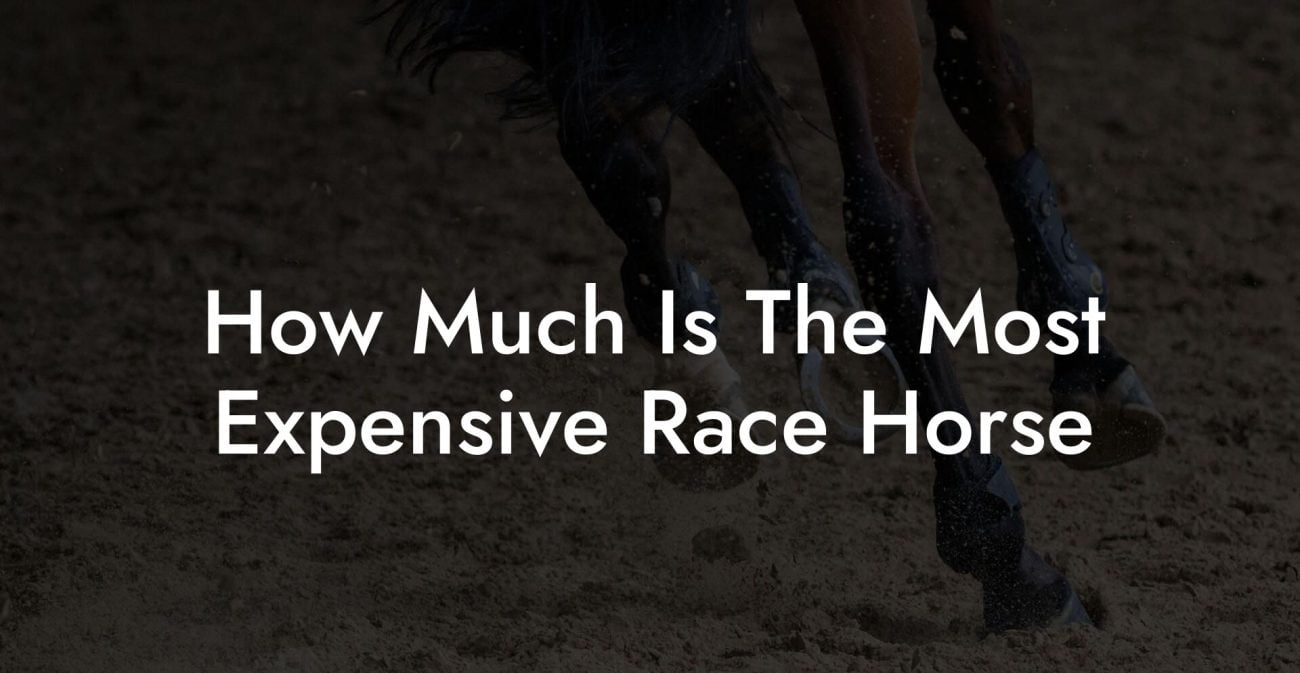Ever caught yourself daydreaming about trotting into the sunset alongside majestic steeds, channeling your inner equestrian superstar, and inspiring a new generation of horse enthusiasts? If so, you’re in for a wild, unbridled journey into the world of becoming a certified horse riding instructor, a career path that’s as exciting and liberating as galloping across open fields on a spirited mare. Buckle up, because we’re about to saddle up, break in some new skills, and dive headfirst into all there is to know about blending your passion for horses with professional instruction that resonates with Gen Z and millennials alike.
Quick Links to Useful Sections
- The Allure of Being a Horse Riding Instructor
- Understanding the Role: More Than Just Riding Horses
- Why Consider a Career as a Certified Horse Riding Instructor?
- Freedom and Flexibility
- A Lifestyle That Resonates
- The Rising Trend of Experiential Careers
- Community and Connection
- Qualifications and Prerequisites: Know Your Starting Line
- Experience in Riding
- Understanding Horse Behavior
- Basic First Aid and Safety training
- Patience, Communication, and Leadership
- Pre-Certification Courses and Workshops
- Exploring Certification Programs: Your Pathways to Professional Recognition
- British Horse Society (BHS)
- United States Pony Clubs (USPC)
- Certified Horsemanship Association (CHA)
- Local and Regional Certifications
- Step-by-Step: How to Get Certified as a Horse Riding Instructor
- Step 1: Assess Your Skills and Set Goals
- Step 2: Choose the Right Certification Program
- Step 3: Enroll and Immerse Yourself in Training
- Step 4: Gain Hands-On Experience
- Step 5: Pass the Certification Assessments
- Step 6: Get Certified and Start Your Career
- Integrating Horse Care: A Vital Component of Instruction
- The Importance of Grooming
- Nutrition and Feeding
- Stable Management and Safety
- Teaching Techniques: Capturing the Interest of a Digital Generation
- Interactive Storytelling
- Gamification of Lessons
- Visual and Hands-On Learning
- Feedback and Social Media Engagement
- Resources and Community Support: Your Next Steps
- Real Stories: Inspiring Journeys to Certification
- The Overnight Transformation
- The Lifelong Dream
- From Amateur to Pro: A Journey of Passion
- Embracing the Journey: Beyond Certification
- FAQ: Your Top Questions Answered on Becoming a Certified Horse Riding Instructor
- Your Future Awaits in the Saddle
The Allure of Being a Horse Riding Instructor
Picture this: the wind in your hair, the earthy scent of hay, and a symphony of hoofbeats as you guide riders from first timid trepidation to confident canters. Being a certified horse riding instructor isn’t just a job, it’s a lifestyle steeped in tradition, adventure, and, most importantly, a deep love for these incredible animals. This isn’t your run-of-the-mill office job; it’s a call to live a life where every day is an opportunity to share your passion, empower others, and foster an enduring connection with the equine world.
Whether you’re the type who learned to ride as a carefree kid or discovered your love for horses later in life, this career offers a blend of adrenaline, creativity, and responsibility. It’s about more than teaching riding techniques, it’s about caring for the horse, ensuring their well-being, and delivering lessons that are as educational as they are experiential.
With the surge in experiential learning and authentic, passion-driven careers, becoming a certified horse riding instructor is perfectly positioned at the crossroads of skill-building, animal care, and lifestyle freedom. Let’s dive deep into what it takes to transform your equestrian passion into a professional reality.
Understanding the Role: More Than Just Riding Horses
At its core, the role of a horse riding instructor involves teaching others the art and science of horsemanship while prioritizing the safety and well-being of both riders and horses. But don’t let the title fool you, this isn't solely about showing off your riding skills. It’s also about mentoring, educating, and even inspiring a hiatus from the digital world into something beautifully tangible.
Here are a few key facets of the job:
- Instruction and Coaching: Demonstrating riding techniques, guiding beginners through foundational skills, and refining advanced maneuvers for seasoned riders.
- horse care and Management: Understanding and implementing proper horse care, from feeding and grooming to recognizing signs of distress or injury.
- Safety Protocols: Enforcing strict safety guidelines to minimize risks during riding sessions and routines, ensuring every lesson is both thrilling and secure.
- Communication and Mentorship: Crafting lessons that resonate, engaging diverse learning styles, and using creative approaches to help students overcome their fears.
- Business Savvy: Whether you’re working at a stables, riding school, or running your own enterprise, managing schedules, marketing, and customer relations is part of the gig.
Embracing the multifaceted nature of this profession means you’re not only developing top-tier riding skills but also growing as a leader, caregiver, and entrepreneurial spirit.
Why Consider a Career as a Certified Horse Riding Instructor?
In a world where “side hustles” and unconventional career paths rule the roost, becoming a certified horse riding instructor is a standout option for Gen Z and millennials. Here’s why:
Freedom and Flexibility
Imagine setting your own schedule, traveling to scenic pastures, and being your own boss. The equestrian industry often offers flexible work hours and the freedom to design your day around what matters most to you, be it thorough horse care or that perfectly timed sunset ride.
A Lifestyle That Resonates
For many, the appeal lies in leading a life that’s deeply connected to nature and animals. If traditional cubicle life feels confining, the open trail and the gentle companionship of horses represent not only an escape but a profound reconnection with what matters.
The Rising Trend of Experiential Careers
Modern career seekers increasingly favor jobs that offer more than just a paycheck, they seek fulfillment, adventure, and a sense of purpose. By teaching horse riding, you offer an immersive learning experience that taps into a growing market of adventure seekers and wellness aficionados.
Community and Connection
The equestrian world is a close-knit community where mentorship and camaraderie thrive. As an instructor, you have the chance to build lasting relationships, inspire fellow enthusiasts, and foster a community that values animal welfare, sustainability, and holistic lifestyles.
In short, if you’re looking for a career that combines passion, purpose, and the promise of a vibrant lifestyle, don’t underestimate the draw of becoming a horse riding instructor.
Qualifications and Prerequisites: Know Your Starting Line
Before you can confidently lead others on the back of a spirited stallion, it’s crucial to build a robust foundation of skills, knowledge, and credentials. Here’s what you need to get started on your path:
Experience in Riding
First things first: you have to be an exceptional rider. Most certification programs require a solid riding background, showcasing your ability to handle a horse in various environments, arena work, trail riding, and even competing in shows. Don’t worry if you’re not a seasoned pro yet; many courses are designed to help you polish your skills along the way.
Understanding Horse Behavior
Knowing how horses think and behave is half the battle. From body language to the subtle cues that indicate stress or contentment, mastering equine psychology ensures you can communicate non-verbally with your four-legged partners. This understanding is indispensable not just for riding confidently but also for maintaining the welfare of your horses.
Basic First Aid and Safety training
Accidents happen, even in the most controlled environments. A robust knowledge of first aid, both human and equine, is essential. Many certification programs include components on emergency protocols, injury prevention, and safe horse handling practices.
Patience, Communication, and Leadership
Beyond technical skills, teaching is an art. The ability to communicate clearly, exhibit patience, and inspire confidence is what transforms a good rider into a great instructor. Courses often assess these soft skills to ensure you’re equipped to handle a dynamic classroom (or riding arena).
Pre-Certification Courses and Workshops
Depending on where you start from, many aspiring instructors opt to enroll in preliminary courses or workshops that cover the fundamentals of riding techniques, horse management, and instructional methods. These programs not only serve as a refresher but also help you network with established professionals in the field.
In essence, laying the groundwork with a mix of personal riding experience, academic training, and practical workshops will poise you for success when you take the plunge into certification.
Exploring Certification Programs: Your Pathways to Professional Recognition
When it comes to becoming a certified horse riding instructor, there isn’t a one-size-fits-all path but rather a variety of recognized certification programs catering to different disciplines and expertise levels. Here’s a rundown of some popular options:
British Horse Society (BHS)
The British Horse Society offers well-regarded instructor training courses that focus on both riding skills and comprehensive horse care. With a strong emphasis on safety, the BHS program combines theoretical modules with practical assessments to ensure that instructors are fully prepared for every challenge.
United States Pony Clubs (USPC)
If you’re based in the U.S., check out the USPC’s instructor certification programs. These programs are tailored for educators who work with both young riders and adults, blending riding proficiency with teaching methodology, and promoting safe, enjoyable riding experiences.
Certified Horsemanship Association (CHA)
For those interested in a more modern and holistic approach, certifications offered by organizations like the CHA emphasize not only riding skills but also mental and emotional connections with horses. Their courses often incorporate mindfulness, equine-assisted learning, and sustainable stable management.
Local and Regional Certifications
Don’t overlook local stables or equestrian centers that may offer certification programs tailored to regional riding styles and practices. These programs are particularly beneficial if you’re planning to work within a specific local community, as they provide insights that align with the local equine culture.
Each certification program has its own set of prerequisites, course durations, and examination formats. Research your options carefully, attend informational seminars if available, and select the program that best fits your career aspirations and personal learning style.
Step-by-Step: How to Get Certified as a Horse Riding Instructor
Ready to take the reins? Here’s your detailed, step-by-step guide to transforming your passion into a professionally recognized skill set.
Step 1: Assess Your Skills and Set Goals
Before enrolling in a certification program, take an honest look at your riding skills, teaching ability, and knowledge of horse care. Identify areas that need improvement and set specific, measurable goals. Whether it’s perfecting your canter or mastering first aid for horses, clarity from the start will help you choose the right course.
Step 2: Choose the Right Certification Program
With a multitude of certification paths available, compare programs based on curriculum, duration, cost, and hands-on training opportunities. Reach out to current instructors and alumni to gauge the effectiveness and industry reputation of the course. Consider whether the program is theory-heavy or emphasizes practical, real-life application.
Step 3: Enroll and Immerse Yourself in Training
Once you’ve selected your program, dive in with full enthusiasm. Prepare for intensive training sessions that blend classroom learning with outdoor practice. Depending on the course, you may need to complete modules on:
- Advanced riding techniques, including dressage, jumping, and trail riding.
- Comprehensive horse care, covering nutrition, grooming, and stable maintenance.
- Emergency response and first aid specific to equine situations.
- Instructional strategies and teaching methodologies that cater to different learning styles.
Embrace every lesson with an open mind. The more effort you invest now, the more rewarding your teaching career will be.
Step 4: Gain Hands-On Experience
There’s no substitute for real-world experience. During your training, seek opportunities to work with horses in different environments, whether that means volunteering at local stables, assisting experienced instructors, or even running beginner sessions under supervision. This hands-on practice is critical for building confidence in both riding and teaching.
Step 5: Pass the Certification Assessments
Certification programs typically culminate in a series of assessments that test both your theoretical knowledge and practical riding abilities. These can include:
- Practical riding exams in various settings (arena, trail, etc.).
- Written tests covering equine anatomy, horse behavior, and safety protocols.
- Teaching demonstrations where you conduct a lesson for a group of novice riders.
Prepare thoroughly for these evaluations by reviewing course materials, practicing with mentors, and even participating in mock lessons to simulate real testing conditions.
Step 6: Get Certified and Start Your Career
Once you’ve successfully passed all assessments, you’ll earn your certification as a horse riding instructor. But the journey doesn’t end there. Use your new credentials to kickstart your career by seeking employment at local stables, riding schools, or by launching your own venture. Remember, certification is your gateway to a rewarding career filled with opportunity for growth, continuous learning, and lifelong passion.
With your certification in hand, you’re ready to blend your technical riding prowess with inspiring teaching skills, bringing the joy of horsemanship to eager learners. It’s a journey that demands dedication, but the personal and professional rewards are immeasurable.
Integrating Horse Care: A Vital Component of Instruction
One crucial aspect that sets exemplary instructors apart is their deep understanding of horse care. Being a horse riding instructor goes beyond just perfecting your riding stance, it means caring for the very creatures that make the experience magical. Here’s why horse care is interwoven with quality instruction:
The Importance of Grooming
Grooming isn’t merely about keeping a horse looking its best; it’s an essential routine that promotes the animal’s overall health. Regular grooming reduces the risk of skin infections, helps identify any injuries or irritations early, and fosters trust between you and your horse. As an instructor, demonstrating meticulous grooming techniques not only sets a good example but instills in your students an appreciation for proper horse care.
Nutrition and Feeding
A well-fed horse is a happy horse. Understanding the dietary needs of different breeds, ages, and activity levels is a cornerstone of responsible horse management. Learners benefit immensely when instructors share insights about balancing feed, supplements, and grazing routines, ensuring that every horse under their care thrives.
Stable Management and Safety
Even the most skilled rider is only as good as the environment they work in. Stable management, covering everything from proper bedding and ventilation to safe equipment handling, is vital for preventing accidents and ensuring that both horses and riders are protected. By learning these best practices, you'll not only safeguard your equine companions but will also equip your students with life-long safety habits.
Whether it’s routine cleaning, monitoring for signs of distress, or simply spending extra time bonding with your horses, integrating meticulous care into your teaching routine enriches the overall learning experience, ultimately leading to more harmonious and successful riding sessions.
Teaching Techniques: Capturing the Interest of a Digital Generation
In today’s fast-paced world, where digital distractions are just a tap away, keeping students engaged during riding lessons requires creativity, innovation, and a dash of humor. Here are some instructive tips for making your classes both fun and effective:
Interactive Storytelling
Every great lesson is a story waiting to be told. Share engaging anecdotes about your own riding adventures, memorable mishaps, and the timeless bond between rider and horse. This narrative approach not only captivates your audience but also creates relatable learning moments that stick.
Gamification of Lessons
Incorporating small games, challenges, or friendly competitions during lessons can turn a routine session into an exciting adventure. Use digital tools, apps, QR codes, or even simple scorecards, to add a modern twist that appeals to tech-savvy Gen Z and millennials.
Visual and Hands-On Learning
Combine live demonstrations with videos, infographics, and interactive workshops. Many students benefit from seeing a technique in action, followed by immediate hands-on practice. Pairing visual aids with practical experience ensures that every learner, regardless of their preferred learning style, walks away with gained confidence.
Feedback and Social Media Engagement
Encourage open feedback and create a community vibe, think private Instagram groups or TikTok challenges where students share their progress. As a riding instructor, your role as a mentor extends into the digital realm, building a community of passionate equestrians who learn and grow together.
Embracing innovative teaching methods not only elevates the learning experience but also reinforces the idea that horsemanship is as relevant and exciting today as it has ever been.
Resources and Community Support: Your Next Steps
Congratulations, now that you have a roadmap to becoming a certified horse riding instructor, it’s time to leverage all available resources and community networks. Surround yourself with mentors, fellow students, and experienced professionals who can offer guidance and support along your journey.
Consider these actionable next steps:
- Join Equestrian Forums and Social Networks: Participate in online groups, follow popular riding influencers on Instagram or TikTok, and attend webinars to stay informed on the latest trends and techniques.
- Attend Workshops and Conferences: Industry events provide not only valuable learning experiences but also networking opportunities that could lead to mentorship, collaborations, or even job offers.
- Volunteer at Local Stables: Gain practical experience, learn from seasoned professionals, and get hands-on with the daily routines of horse care and riding instruction.
- Follow Certification Bodies: Stay updated with organizations like the British Horse Society, US Pony Clubs, and the Certified Horsemanship Association for news on courses, updates, and best practices.
- Invest in Continuing Education: The equestrian world evolves constantly. Consider further certifications in specialized areas like therapeutic riding or advanced equine nutrition to keep your skills current and in-demand.
With modern technology and vibrant networks at your fingertips, your journey to mastery is bolstered by an ecosystem of support, innovation, and shared passion.
Real Stories: Inspiring Journeys to Certification
Sometimes, the best motivation comes from hearing how others turned their love for horses into a thriving career. Meet a few inspiring figures who embarked on this exciting journey:
The Overnight Transformation
Casey, a former software developer, swapped late-night coding marathons for dawn rides on a spirited mare. Initially taking riding lessons to unwind, Casey’s growing passion and natural talent saw her enrolling in certification courses within just a year. Today, she inspires other tech-savvy millennials to consider the liberating – and infinitely rewarding – world of horsemanship.
The Lifelong Dream
Jordan grew up around horses, but life’s twists sent him down an entirely different career path. Years later, realizing that his true calling lay with his equine companions, he immersed himself in instructor certification programs. With perseverance and a commitment to excellence, Jordan now runs a highly respected riding school that emphasizes both superior instruction and compassionate horse care.
From Amateur to Pro: A Journey of Passion
Mia always had that spark for riding, but it wasn’t until she began volunteering at a local stable that she realized her potential. Now a certified instructor, Mia incorporates modern teaching techniques and interactive digital media into her lessons, bridging the gap between centuries-old traditions and today’s fast-paced digital culture. Her story is proof that following your passion can lead to personal reinvention and boundless professional opportunities.
These stories illustrate that regardless of how you start, dedication, continuous learning, and a genuine love for horses can propel you into a fulfilling equestrian career.
Embracing the Journey: Beyond Certification
Earning your certification is just the beginning. The vibrant world of horse riding instruction is dynamic, continuously evolving, and deeply interconnected with both animal welfare and human experience. As you advance in your career, keep these tips in mind:
- Commit to Lifelong Learning: Stay curious, attend masterclasses, and never stop refining your riding and teaching techniques.
- Maintain Your Horses: Your relationship with your horses is the heartbeat of your professional life. Give as much importance to their care as you do to your lessons.
- Innovate and Inspire: Create unique lesson plans, integrate technology, and always find ways to make learning engaging and relatable.
- Build Your Brand: Use social media, blogs, and digital mediums to share your journey, showcase your expertise, and connect with a global community of equestrians.
- Invest in Quality Equipment: From saddle care tools to safety gear, quality equipment not only enhances the training experience but also underscores your commitment to professional excellence.
Remember, the path of an instructor is an evolving one, a brilliant fusion of continual self-improvement and a deep-seated commitment to the art and science of horse riding.
As you progress, celebrate every milestone, from that first perfectly executed canter to the success stories of your students. Each experience forms the rich tapestry of your professional identity.
FAQ: Your Top Questions Answered on Becoming a Certified Horse Riding Instructor
We know you’ve got questions about turning your equestrian passion into a certified career. Here are some of the most frequently asked questions answered just for you:
1. What qualifications do I need to become a certified horse riding instructor?
A strong riding background, a good grasp of horse care and safety protocols, and an aptitude for teaching are essential. Most certification programs also require you to have a certain amount of riding experience, which you can further enhance through workshops and volunteering.
2. How long does the certification process typically take?
Depending on the program and your prior experience, the journey can range from several months to over a year of training combined with practical assessments.
3. Are there online courses available for certification?
While some theory-based components can be completed online, hands-on practical training is integral to most programs to ensure that you can safely manage horses and effectively instruct students.
4. How important is horse care in the instructor certification process?
Extremely important! Comprehensive understanding of horse behavior, nutrition, and stable management is a crucial part of the certification process as it ensures the welfare of the horses and safety of your students.
5. Can I work part-time as a horse riding instructor?
Absolutely. Many instructors work part-time or freelance, leading lessons while also pursuing additional endeavors. The flexibility of the career lets you tailor your workload to suit your lifestyle.
6. What are some reputable certification organizations?
Look into programs offered by the British Horse Society, United States Pony Clubs, the Certified Horsemanship Association, and local equestrian centers, all of which offer robust certification courses.
7. How do I gain hands-on experience before certification?
Volunteering at stables, attending riding clinics, and assisting seasoned instructors are great ways to build your practical experience before diving into certification courses.
8. Is there a high demand for horse riding instructors?
Yes, especially in regions with a vibrant equestrian scene. With the growing trend of experiential careers and outdoor activities among millennials and Gen Z, opportunities in this field are expanding.
9. What are the benefits of becoming a certified horse riding instructor?
Besides a fulfilling career doing what you love, certification offers credibility, access to exclusive teaching opportunities, and the chance to build a network within a passionate equestrian community.
10. Do I need to learn about business management too?
While not mandatory for all positions, having basic business skills is highly beneficial if you plan on running your own riding school or offering private lessons.
Your Future Awaits in the Saddle
Embarking on the journey to become a certified horse riding instructor is nothing short of transformative. It’s a career that fuses adrenaline, compassion, and the timeless human-animal bond. Every ride, every lesson, and every moment spent in the company of horses is a step toward a life that’s both exhilarating and deeply fulfilling.
With dedication, ongoing education, and a genuine love for horses, you’ll not only master the art of riding but also inspire countless others to discover the joy and freedom found in the saddle. So, put on your riding boots, fuel your passion with relentless curiosity, and jump headfirst into a career where every day is an adventure.
This is your chance to leave behind the monotonous and dive into a life drenched in excitement, community connection, and the enduring wonder of equine elegance. Your journey as a certified horse riding instructor begins now, embrace it, live it, and above all, enjoy every ride.



